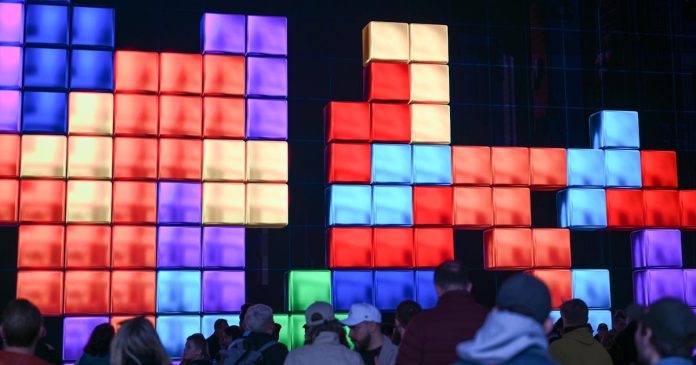They say imitation is the sincerest form of flattery. When something is shamelessly duplicated or replicated the silver lining is that, deep-down, it’s really an homage to the past. That’s cold comfort to those who were copied, especially when there’s money on the line. The video game industry is filled with “spiritual successors” of all kinds, but 35 years ago, Nintendo launched a flagrant imitation that became a legendary franchise.
On July 27, 1990, Nintendo introduced the world to Dr. Mario, a pill-matching puzzle game that combined the charm of their most iconic character with the addictive gameplay of falling block mechanics. If it sounds a lot like Tetris, it’s because it is, coupled with enough tweaks and aesthetic charm to stand on its own. While Dr. Mario’s origin story may be tinged with controversy, its legacy as an all-time puzzle classic remains secure.
The origins of Dr. Mario begin at a moment when Nintendo was riding high off the success of Tetris, the Soviet-designed puzzle game that had become a cornerstone of the Game Boy’s runaway popularity. It was a perfect storm: Alexey Pajitnov’s creation was simple, addictive, and transcended language or age. But beneath the surface, Nintendo’s relationship with Tetris was more complicated than its cheery 8-bit soundtrack suggested.
Nintendo had secured Tetris publishing rights through a labyrinthine series of licensing deals that pitted it against other hungry publishers like Atari and Sega. Ultimately, the company came out on top, establishing itself as the puzzle game platform. Yet, the cultural cachet of Tetris was not something Nintendo fully owned. Pajitnov was employed by the Soviet government at the time, and Nintendo’s control of the IP was always conditional and limited. And as any streamer who’s ever broadcast a pirated game can tell you, Nintendo takes its IPs extremely seriously.
Available on both NES and Game Boy, Dr. Mario quickly became a favorite among the massive Tetris audience.
Nintendo
Developed by Nintendo R&D1 and produced by industry legend Gunpei Yokoi, Dr. Mario was both a response to and a hedge against Tetris’s overwhelming success. It offered a similar drop-and-match mechanic but added a layer of character-based branding, turning Mario into a white-coated virus-fighting physician. The goal: eliminate colorful viruses by matching them with like-colored pill segments. Simple, elegant, and immediately familiar to anyone who had lost hours to Tetris.
It was also familiar to Henk Rogers, the producer who partnered with Pajitnov to bring Tetris to the world and, most importantly, to Nintendo. He worked closely with Yokoi on bringing it to Game Boy, and told PC gamer earlier this year he was “pissed off” when he first learned of Dr. Mario.
“That instruction must have come because [Nintendo CEO] Mr. Yamauchi tried to buy Tetris from me,” Rogers said in the interview. “I said no, like ‘OK I’ll trade Mario for Tetris’. Meaning sort of over my dead body. And then Mr Yamauchi gave instructions [to his team], ‘you go make a game that’s as good as Tetris’ … Dr. Mario is sort of a blatant attempt at making another Tetris. And it’s not as good.”
Rogers said he’s forgiven Yokoi for the move. In Nintendo’s defense, Dr. Mario wasn’t just a copycat. Its design introduced nuanced mechanics that emphasized spatial awareness and forward-thinking strategies. Unlike Tetris, where speed and reflex ruled, Dr. Mario invited players to think more slowly and methodically. The viruses remained stationary, creating a persistent puzzle to solve rather than an endlessly scrolling gauntlet. This twist gave the game a more deliberate tempo, making it both less stressful and, arguably, more strategic.
Years later, Nintendo decided to offer fans the best of both worlds.
The game was released on both the NES and Game Boy in July 1990, becoming an immediate success. Critics praised its accessible gameplay, catchy soundtrack by Hirokazu Tanaka (including the iconic “Fever” theme), and competitive two-player mode. Commercially, Dr. Mario sold millions of copies and quickly earned a place in the NES’s late-stage library of must-owns. It wasn’t Tetris, but it didn’t need to be. It was Nintendo’s own puzzle franchise, one they could shape without licensing headaches or geopolitical baggage.
Critically, the franchise has always been well-regarded, even if it’s rarely the centerpiece of Nintendo Directs or E3 hype reels. What Dr. Mario lacked in pizzazz, it made up for in purity of gameplay. Reviewers consistently pointed to its elegant mechanics and addictive loops, though later entries sometimes drew criticism for lacking innovation. Now, on its 35th anniversary, Dr. Mario deserves recognition not just as a puzzle classic, but as a strategic milestone in Nintendo’s history. It reflects the company’s shrewd business instincts and occasional territorialism.
While Tetris remains the purer puzzle icon, Dr. Mario carved out a legacy as Nintendo’s homegrown response that’s just a little weirder, a little more playful, and still infectiously fun. And to this day, the game’s existence is often viewed through the lens of “what if?” What if Nintendo had worked more closely with Pajitnov on original projects instead of creating a competitor?
Whether Nintendo gives us more Dr. Mario in the future remains to be seen. But its place in the company’s DNA, and in the memories of players who lost hours matching those red, blue, and yellow pills to a bouncing beat, is already well secured. The ‘90s would never have had Nintendo fever without a dose of Dr. Mario.
